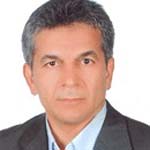Agroecological Zoning of Wheat (Triticum aestivum L.) Production Systems using RS and GIS in the Shavoor Plain of Khouzestan
Growing demand for food in the coming decades will require a significant increase in crop production. Indeed, the variability of weather, soil and topography result in different agro-ecological conditions which may be suitable or unsuitable for some crops. To determine land suitability in an ecosystem, agro-ecological zonation is one of the effective tools for recognizing the capabilities of land and allocating them to the best and most profitable types of crop utilization. Currently, it is one of the most commonly used methods for determining the agro-ecological characteristics of large geographical areas for the production of crops. This research was performed to perform the agro-ecological zoning Shavoor area for the production of wheat. Therefore, this research was conducted with the aim of agro-ecological zoning and evaluate the land suitability in a part of Shavoor lands of Khouzestan, with using the parametric method (square root). Also, wheat potential production and potential land production were calculated.
Study area: The present study conducted in Shavoor area, Khouzestan Province, Iran, is located in 31° 47' 39" to 31° 53' 19" N latitude and 48° 27' 32" to 48° 22' 12" E longitude. The study area is 5000 ha. The length of the "growing season" or "growing period" (LGS or LGP), as defined by the Agro-Ecological Zones project, is the period (in days) during a year when precipitation exceeds half the potential evapotranspiration. A period required to evapotranspiration an assumed 100mm of water from excess precipitation stored in the soil profile is sometimes added. No provision made for stored soil moisture. To obtain a length of the growth period, the rain, and potential evapotranspiration during the growth period estimated from the data weather of Safiabad station. For soil mapping, it was used for precise semi-detail studies irrigation and drain networks of Shavoor plain. Finally, the soil map prepared. Landsat 8 and IRS satellite images in 2016 were used to provide a land-use map. The agro-ecological zoning map of the study area was obtained by the combination of agro-climatic and agro-edaphic data and apply the function in the GIS environment. To evaluate the Land suitability in Agro-ecological zoning, conformity of the land characteristics in each defined zone with wheat growing requirements performance, and the final class of land was measured. To estimate the Potential yield in the region, the FAO model, was used.
After overlapping desired maps in the GIS, the study area defined and separated into 8 Agro-ecological zones. Land suitability evaluation
Based on square root and Storie methods 42% and 58% of the land were located in the classes including moderately suitable land (S2) and marginally suitable (S3). The potential yield of wheat was obtained 6823 kg ha-1 by using the FAO method. The land production potential in each of the zones was also estimated. Because of the effects of the aforementioned limitation factors, the land potential production for wheat decreased in lands the Khalaf Aziz (A), Bam Dej (B), Elhaee (C), Ali Chaab (D), Karkheh (E), Abdul Khan (F), Sayed Abbass (G) and Bait Hatam (H) by 28, 60, 60, 60, 55, 52, 40 and 51%, respectively. By improving these constraints, such as proper management practices such as increasing organic matter to the soil and land leaching, it is possible to increase the production of wheat in these ecosystems.
This evaluation conducted to agroecological zoning of the Shavoor plain for agro-ecosystem planning. Land suitability and land production potential estimated in each zone for wheat-based on parametric (square root) and Storie method. The results showed that climatic properties did not create significant limitations for wheat cultivation in an ecosystem. Limitations related to soil properties results showed that the A and F zones of the study area were the moderately suitable class (S2). Also, the deficit of organic matter, salinity, and alkalinity in the other parts are the major limiting factors.
- حق عضویت دریافتی صرف حمایت از نشریات عضو و نگهداری، تکمیل و توسعه مگیران میشود.
- پرداخت حق اشتراک و دانلود مقالات اجازه بازنشر آن در سایر رسانههای چاپی و دیجیتال را به کاربر نمیدهد.



